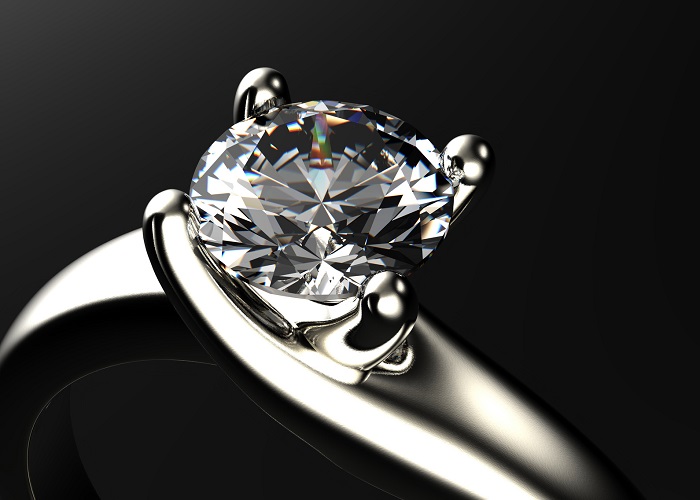Ever heard of a costly engagement ring and thought that it was a high figure, one you’d never have thought of? Cardi B’s engagement ring cost $500,000, while Jennifer Lopez’s back in 2004 cost $4.5 million! As crazy as it is, diamonds can be really pricey depending on what particular one you want.
So, how do you assess diamonds to determine the quality?
There are a few factors that go into this, which has become a universal method for grading diamonds.
The 4 C’s of Diamond
Carat Weight
How much a diamond weighs is among the factors that determine the cost of a particular diamond, whether bracelet, neck piece or ring. They are measured in carats, and a metric carat is usually 200mg of preferably 0.2 grams.
Every carat is usually divided into 100 points. Diamonds are mostly sold in carats. If, for example, a ring weighs more than one carat, it is denoted in points. For example, you can have a 1.05-carat diamond ring.
The higher the carat size, the higher the price of the diamond. However, the price is not dependent only on the carat weight. It is possible for a diamond ring to have the same carat weight but have a different rate depending on the other three C’s.
Color
Diamonds will usually come in different colors. Most often, the color of diamonds is typically affected by chemical impurities. They come in white, red (which is generally very rare), yellow, pink, green, black, brown, steel gray and blue colors.
Chemically pure diamonds have a higher value than the colored ones. However, you can get reasonably priced lab created jewelry, and you don’t have to break the bank necessarily. According to GIA’s grading system, it starts from D-Z and measures the degree of colorlessness. If you look at a diamond, you may think the colors are the same, but what happens is, when comparing different ones, you need controlled lighting because some are narrowly different.
The reason why the grading starts at D is that GIA didn’t want to get associated with other previous grading systems that started from A.
As the carat weight increases, the color is also considered before pricing.
Diamond Cut
What comes to mind when you think about a diamond cut? Shape (emerald, round, etc.) and size, right? Well, that’s far from it. A diamond’s cut is more on how the diamond’s facets will interact with the light.
Usually, diamonds are known for their ability to transmit light and their intense sparkle. As much as it is difficult to quantify and analyze diamond cut, it has three effects on the overall appearance.
One is the scintillation. This is when flashes of dark, light, or sparkle of a diamond are moved.
Two is the brilliance. This is the brightness that’s formed when there is a combination of the white light reflections that come from the inside of a polished diamond and from the surface.
Three is fire. This is mostly seen as flashes of color when there is a dispersion of light in the visible spectrum.
The diamond cut is one of the hardest to analyze of the 4 C’s. It needs excellent artistry to shape the stone into the return of light, which is only possible in a diamond. The artist/cutter is supposed to have a balance between getting an optimal cut, which has to do with appearance, as well as maximum yield to ensure you maximize on the weight.
Diamond Clarity
For natural diamonds, they are a result of carbon that has been exposed to extreme heat deep on the earth. For lab-created diamonds, like those at AdaDiamonds, they are grown in the ‘lab’ using technology that mimics those produced under the surface. Fun fact, unless you’re a jeweler, you can’t tell the difference between a natural and lab created diamond.
For the natural process, during the whole process, it could lead to some internal characteristics, which are referred to as ‘inclusions’ and external characteristics that are referred to as ‘blemishes.’
When evaluating a diamond’s clarity, the process involves determining the size, relief, and position of these blemishes and inclusions.
No diamond’s 100% pure, but the closer it is to be pure, the higher the price. Diamond cutters will cut diamonds in a way that they try to make the inclusions not visible.
Inclusions should preferably be near the girdle or bezel facets because it will be harder to see them there.
The above are some of the factors that go into pricing diamond. The price is not determined by just one factor but a combination of the 4 C’s.











